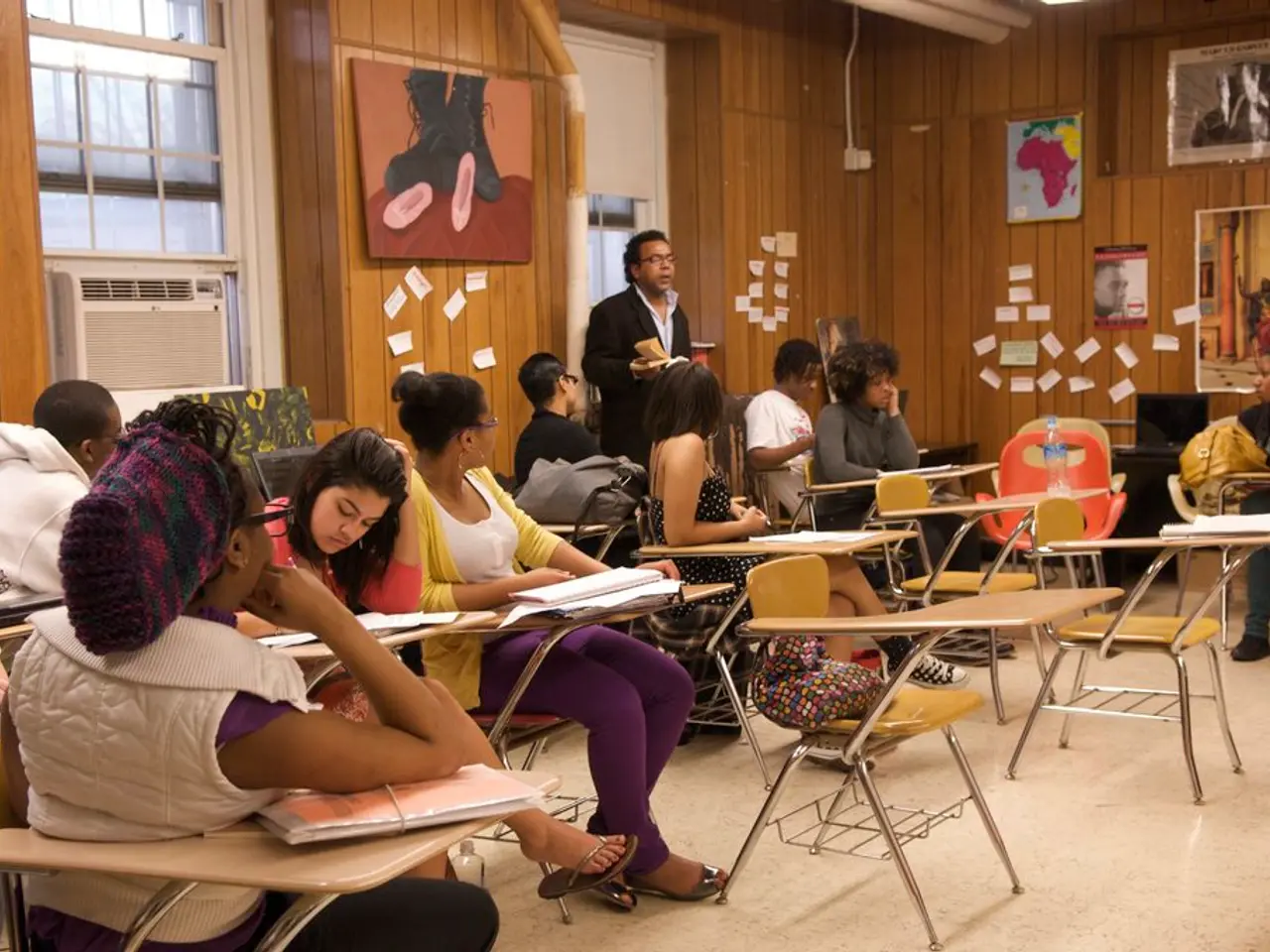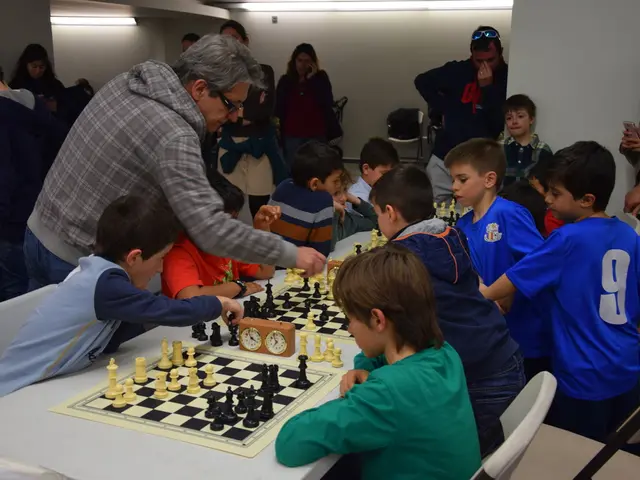Navigating AI Integration in Education - Embracing Cautious Enthusiasm
In the ever-evolving world of education, artificial intelligence (AI) is rapidly becoming a common tool expected to be used by most students as they enter the workforce. This shift, however, has sparked a debate about the role of AI in schools, with concerns over overprescriptive policies and rules potentially stifling innovation.
The State Educational Technology Directors Association (SETDA) in the United States is actively working towards developing recommendations for the use of AI in schools. Their recent annual report, involving education technology directors and experts from 47 states, highlights this ongoing effort.
One school district leading the way in this area is the Mountain Views Supervisory Union in Vermont, where Principal Aaron Cinquemani has established Generative Artificial Intelligence Guidelines. These rules allow the use of AI tools in school for students 13 or older, with parental permission.
However, it's not just about using AI; it's about using it wisely. Kristina Peterson, an English teacher at Exeter High School in New Hampshire, uses AI as a brainstorming tool in her classes, emphasising the importance of guardrails and best practices. She encourages her students to be healthy skeptics, pointing out errors in AI-generated summaries to foster critical thinking.
Justin Reich, an associate professor of digital media at the Massachusetts Institute of Technology, stresses the significance of this critical moment for schools to recognise and respond to advances in AI. He notes a significant difference between those knowledgeable in a topic using AI to bolster that knowledge, and novices who know little about the material or subject matter.
Reich's team of researchers have interviewed over 100 teachers and 40 middle and high school students from around the country to understand their perspectives on AI and the questions they have about its use. He adds that AI can amplify both good and bad teaching approaches, and that it is important to be skeptical about its use in education.
A concept called "containment" is crucial in education, focusing on meaningful control of AI use to enhance student learning, make teachers' jobs easier, and protect student and educator data. Schools must balance compliance with the use of AI tools against curiosity about how those tools work to avoid killing curiosity.
Clayton Dagler, a teacher at Franklin High School in Elk Grove, California, is teaching students how to tackle complex societal problems by pairing a computer-coding language commonly used in AI technologies with math concepts. This approach encourages students to understand the limitations of AI and why they should be skeptical about the accuracy of what it generates.
However, not everyone is welcoming the AI revolution in schools. Some educators view the over-reliance on AI in K-12 schools as a dystopian scenario, fearing it could diminish the human element of empathy, nuanced understanding, and social-emotional development.
New York City public schools initially banned the use of ChatGPT but later backpedaled and established a research initiative to examine proper uses of AI for teaching and learning. This shift reflects a growing understanding that schools must evolve to tolerate a wider range of experimentation around AI use.
Rafe Steinhauer, an instructional assistant professor at Dartmouth College, suggests that understanding how to use AI in developmentally appropriate ways for different age groups is crucial. Younger students, for instance, are more likely to attribute human qualities to AI technologies, making it essential to approach AI use with care and understanding.
In conclusion, the integration of AI in education presents both opportunities and challenges. As we navigate this new landscape, it's crucial to remember that AI is a tool to enhance learning, not replace human teachers or students. Teachers must be allowed and encouraged to experiment with AI in meaningful ways to teach students these important skills. The balance between compliance and curiosity, understanding and skepticism, is the key to a successful and enriching AI-assisted education.








